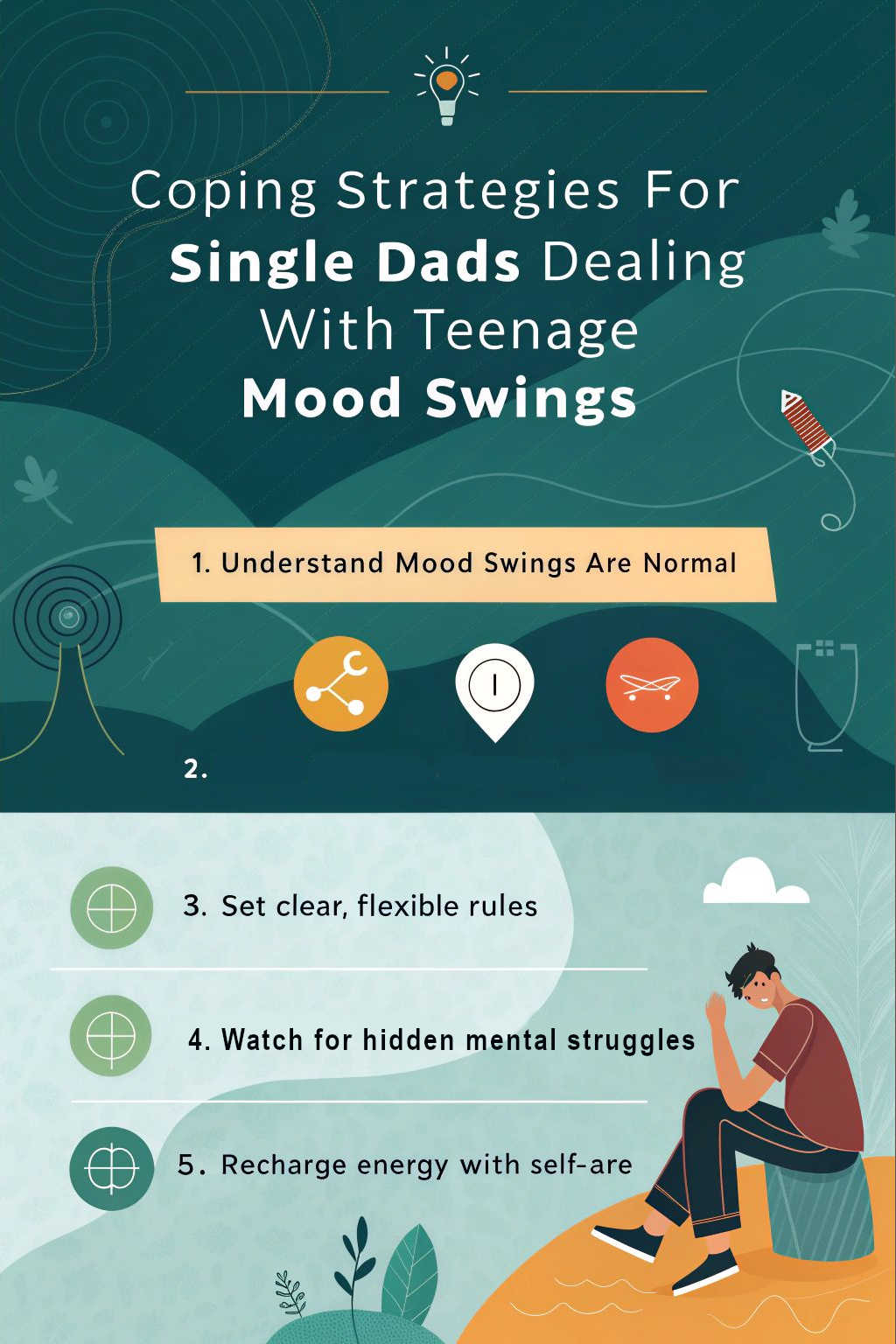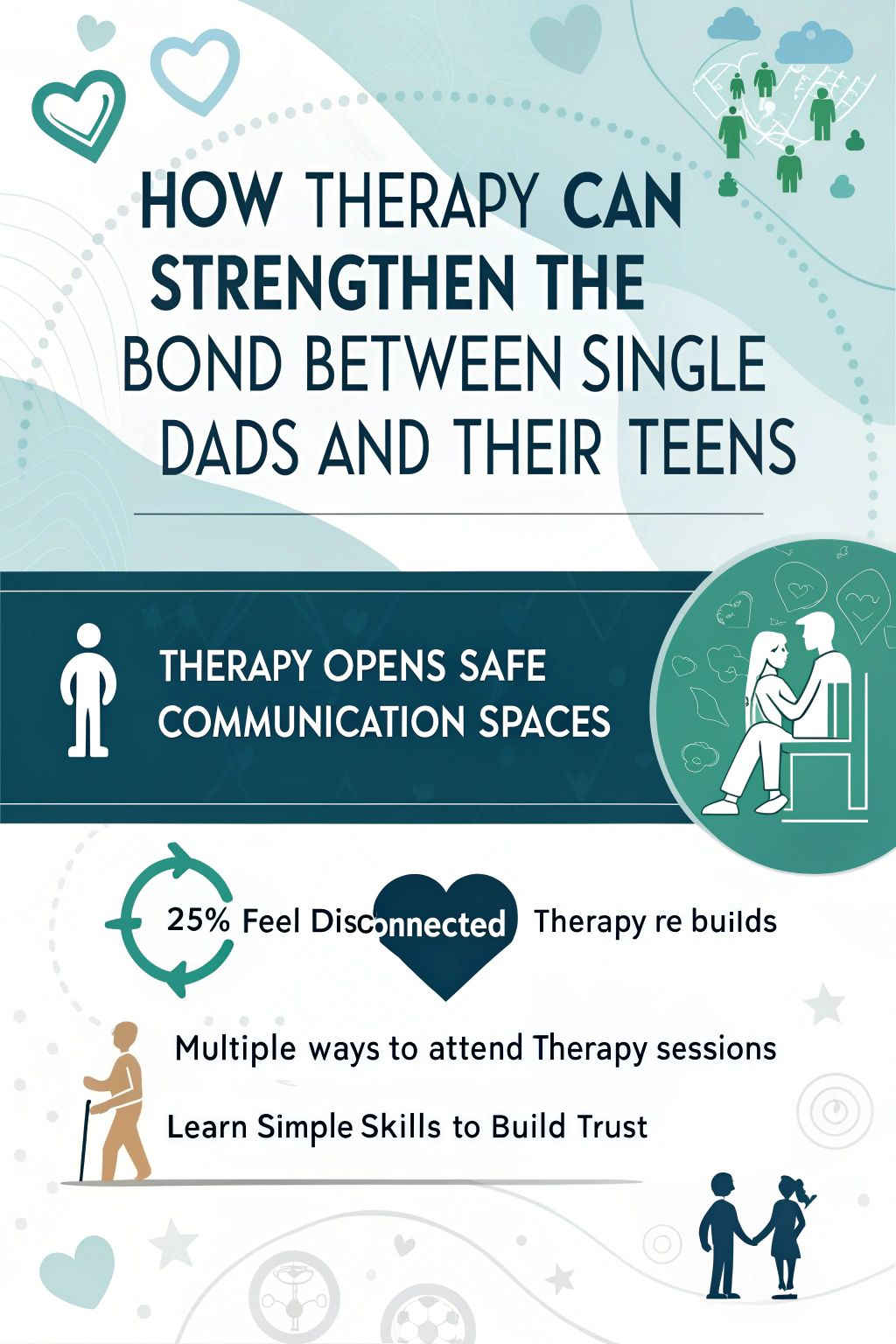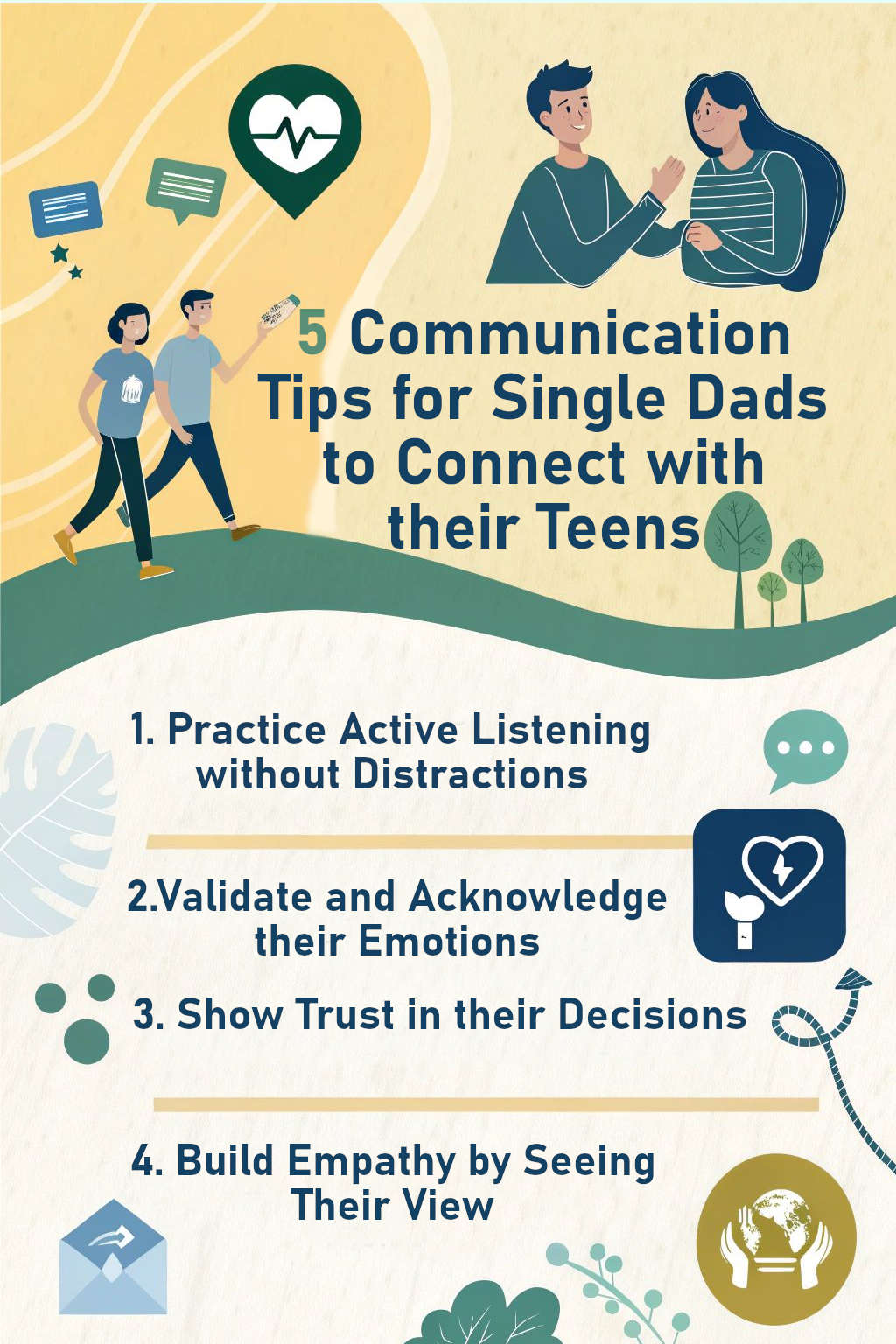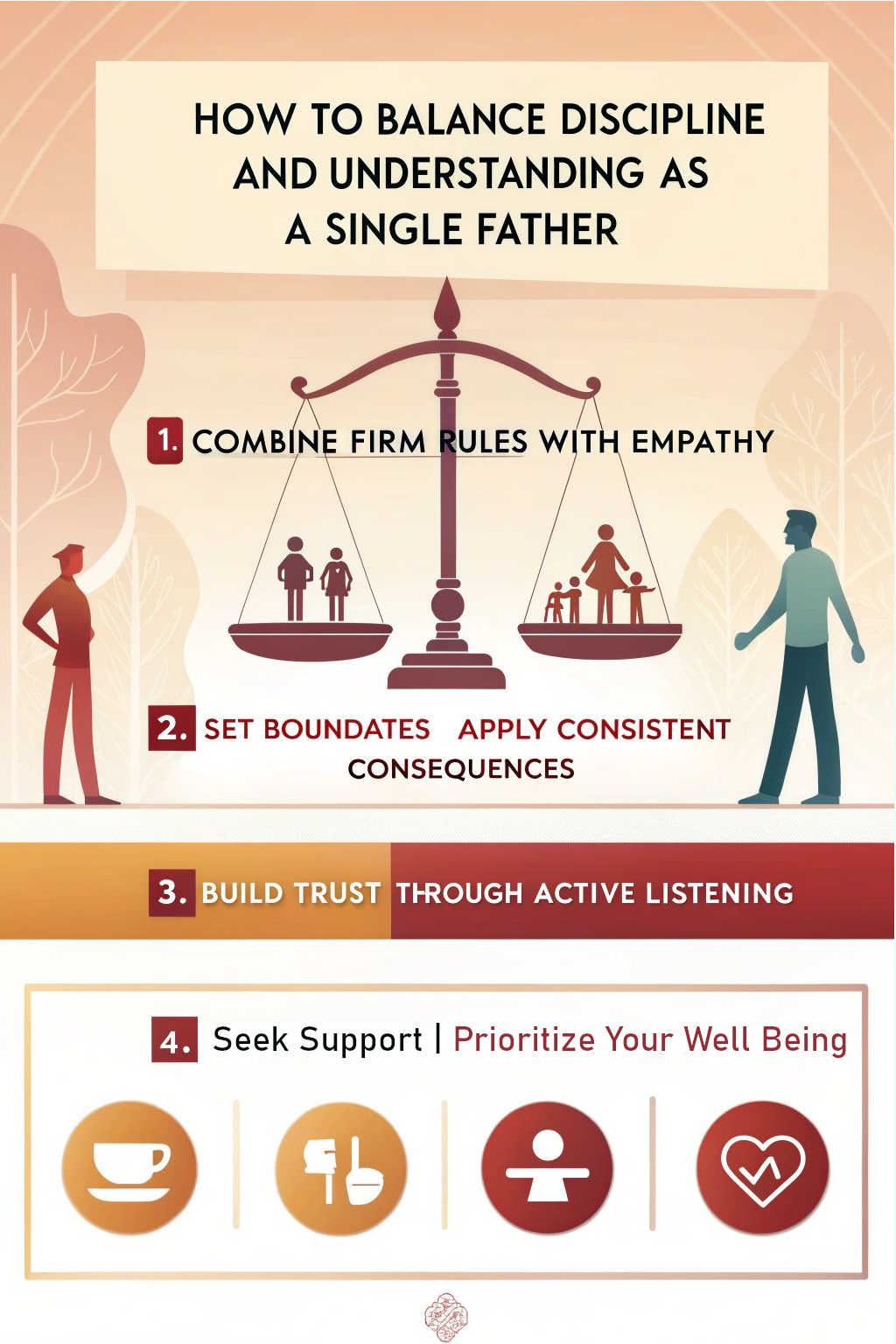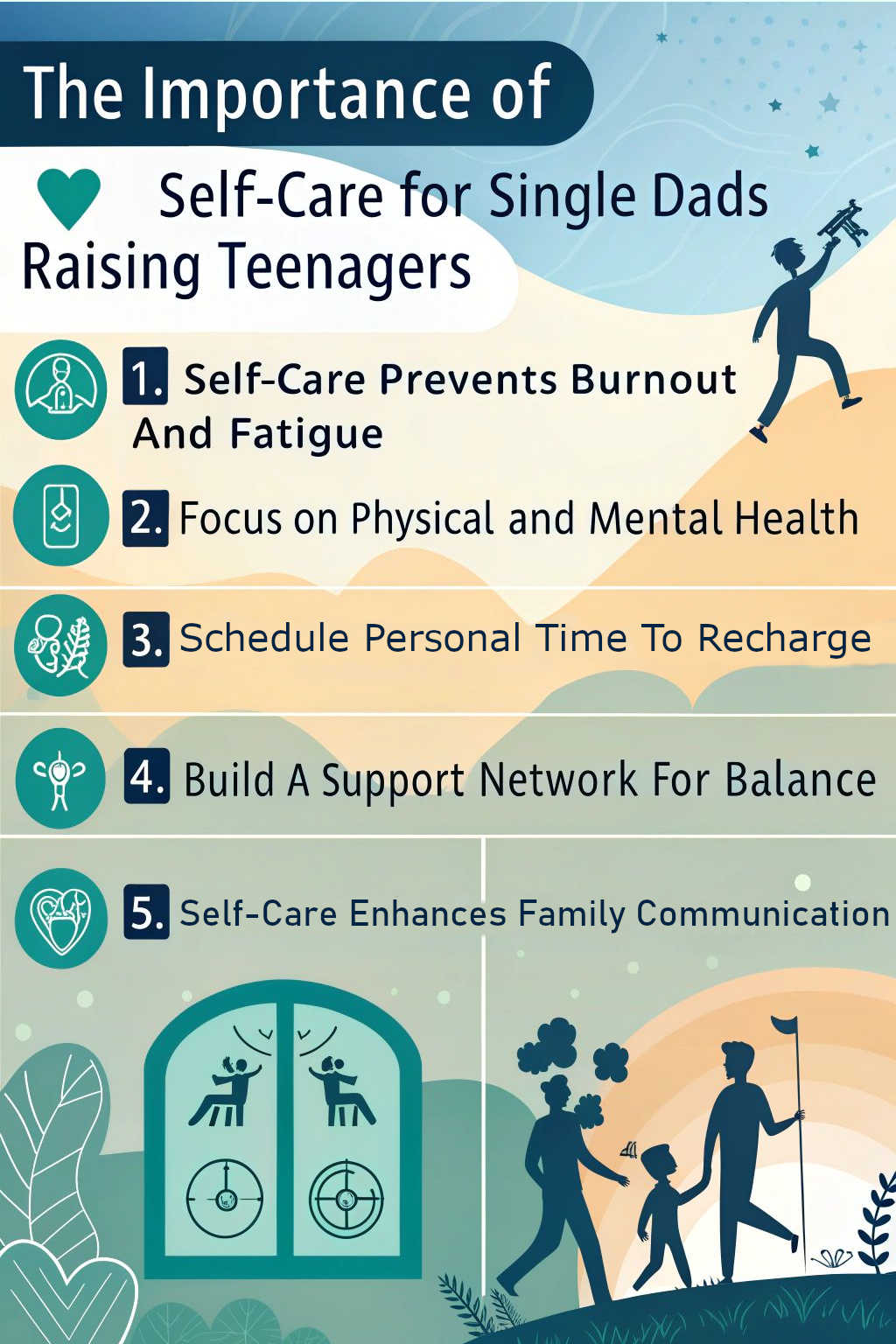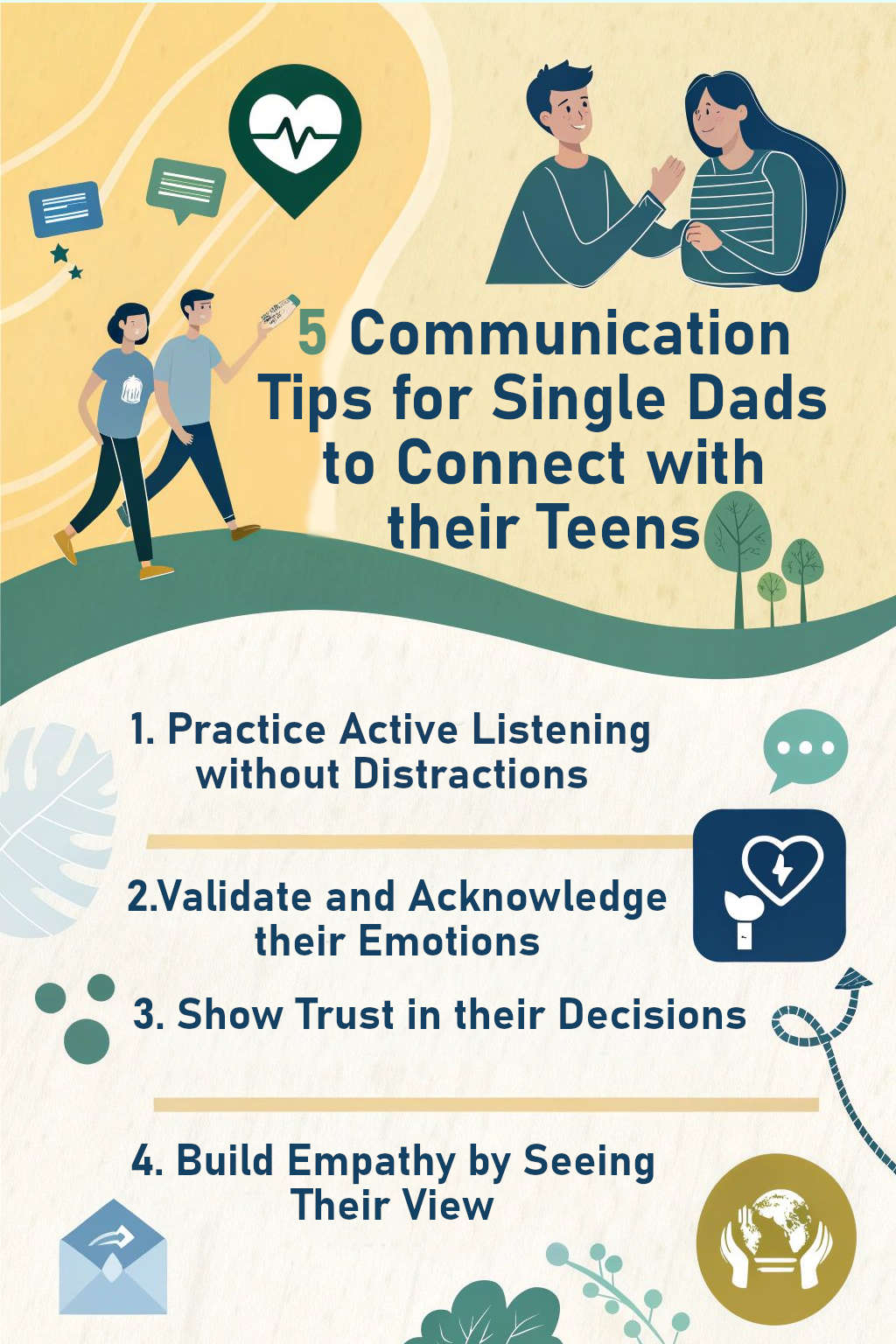Many families struggle with the challenge of adolescent substance use disorders. Shockingly, nearly one in eight adolescents meet the criteria for a substance use disorder. This article will guide you through understanding, identifying, and addressing these disorders in young people.
Keep reading to learn how you can help.
Key Takeaways
- Nearly one in eight adolescents struggle with substance use disorders, highlighting the need for targeted treatment plans that consider their unique needs. These plans often combine behavior therapy and medication to tackle both addiction and any underlying mental health issues.
- Factors like genetics, family environment, peer pressure, and early drug exposure influence the development of substance use disorders in teenagers. Brain changes during adolescence also play a crucial role in increasing vulnerability to addiction.
- Confidentiality is key when diagnosing adolescents with substance use disorders. It builds trust and encourages openness. Laboratory tests are essential tools that help confirm substance use and monitor treatment progress.
- A wide range of treatments exists for adolescent substance users, including medications like bupropion for nicotine addiction or naltrexone for alcohol dependence. Behavioral therapies such as cognitive-behavioral therapy (CBT) and family therapy are effective in teaching coping skills and improving relationships.
- Harm reduction strategies focus on minimizing negative consequences associated with drug use among teens without necessarily insisting on total abstinence right away. This approach includes education on safer practices, providing clean injection equipment if needed, and supporting medication-assisted treatments.
Scope and Prevalence of Adolescent Substance Use Disorders
Understanding the reach and impact of substance use disorders (SUDs) among adolescents sets the stage for addressing this critical mental health concern. Data reveals that a significant number of teens grapple with issues related to drug abuse, including alcohol, marijuana, opioids, and tobacco products.
These findings highlight the urgent need for effective substance abuse treatment strategies tailored to meet the unique needs of youth.
Research shows staggering rates of binge drinking, marijuana use, and experimentation with prescription drugs within this age group. This trend underscores a pressing public health challenge that demands attention from healthcare providers, educators, and families alike.
Substance use not only affects adolescents’ physical health but also their academic performance and social relationships. As such, confronting adolescent SUDs requires a multifaceted approach involving early detection, comprehensive care plans including behavioral therapy and pharmacotherapy options when appropriate, and ongoing support to prevent relapse.
Etiology and Pathophysiology of Substance Use Disorders in Adolescents
Several factors contribute to the development of substance use disorders (SUDs) among adolescents. Genetic predispositions play a significant role, making some teens more vulnerable to addiction than others.
Environmental influences, such as exposure to drug abuse within the family or peer group pressure, also significantly impact an adolescent’s likelihood of developing SUDs. Early experiences with drugs or alcohol can alter brain chemistry and structure, leading to changes in behavior and an increased risk of addiction.
Brain development during adolescence greatly affects decision-making, impulse control, and susceptibility to addictive behaviors. This period is critical for emotional and social development as well; therefore, mental health issues like depression or anxiety can drive adolescents toward substance misuse as a coping mechanism.
The interaction between these psychiatric disorders and substance abuse complicates the pathophysiology of SUDs in young people, often requiring specialized treatment approaches that address both sets of challenges simultaneously.
Screening and Diagnosis of Adolescent Substance Use Disorders
Understanding the steps to identify and diagnose substance use disorders in teens is crucial for early intervention, offering hope for recovery and a healthier future.
Confidentiality in Diagnosis
Maintaining confidentiality during the diagnosis of substance use disorders in adolescents is crucial. It builds trust between the healthcare provider and the patient, encouraging honesty about drug use and related behaviors.
Health services professionals must ensure that all discussions and records regarding an adolescent’s substance use disorder (SUD) remain private, following legal requirements and ethical guidelines.
Protecting a young person’s privacy around their SUD diagnosis helps them feel safe to share sensitive information. This practice supports effective treatment planning and fosters a positive relationship between the adolescent, their family, and health care teams.
Confidentiality also aligns with laws designed to safeguard patient information, ensuring adherence to both ethical standards and regulatory compliance within medical practices.
Laboratory Testing in Diagnosis
Laboratory testing plays a crucial role in diagnosing substance use disorders in adolescents. Health professionals often rely on these tests to detect the presence of substances like alcohol, opioids, benzodiazepines, and stimulants in the body.
This method provides objective evidence of substance use, which is essential for accurate diagnosis and treatment planning.
Tests can reveal not only active drug use but also indicate the severity of the disorder through parameters such as frequency and quantity of substance intake. They are valuable tools for monitoring treatment progress, identifying potential relapses early, and adjusting therapeutic strategies accordingly.
For adolescents undergoing medication-assisted treatment with drugs like buprenorphine or methadone, laboratory tests ensure safety and efficacy by tracking adverse effects and ensuring proper dosing.
Treatment for Substance Use Disorders in Adolescents
Exploring various treatment strategies offers hope to adolescents battling substance use disorders, guiding them toward a healthier future.
Pharmacotherapy Options
Treating substance use disorders in adolescents often requires a careful selection of pharmacotherapy options. These medications can help manage withdrawal symptoms, reduce cravings, and treat comorbid psychiatric conditions. Here is a closer look at these options:
- Bupropion: Doctors prescribe this medication for nicotine addiction. Bupropion helps reduce cravings and withdrawal symptoms associated with quitting smoking or the use of e-cigarettes.
- Fluoxetine and Other SSRIs: Selective Serotonin Reuptake Inhibitors (SSRIs), like fluoxetine, are effective in treating depression and anxiety disorders that often co-occur with substance use disorders. They work by increasing serotonin levels in the brain, which improves mood and reduces anxiety.
- Naltrexone: This medication is useful for treating alcohol and opioid dependence. Naltrexone works by blocking the euphoric effects of alcohol and opioids, reducing the desire to consume these substances.
- Methadone: Specifically used for opioid use disorder, methadone reduces withdrawal symptoms and cravings by acting on the same opioid receptors in the brain that heroin and prescription opioids affect.
- Benzodiazepines: In controlled settings, benzodiazepines may be used short-term to alleviate severe anxiety or withdrawal symptoms from alcohol or benzodiazepines themselves. Careful monitoring is required due to their abuse potential.
- Psychostimulants: For adolescents diagnosed with attention-deficit/hyperactivity disorder (ADHD) alongside substance use disorders, psychostimulants such as methylphenidate can improve concentration and impulse control.
- Contingency Management Interventions: While not a pharmacotherapy, contingency management offers vouchers or small cash rewards for positive behaviors such as staying drug-free. This behavioral strategy can complement pharmacological treatments by encouraging adherence to medication regimes.
- Anticonvulsants: Some anticonvulsant medications are prescribed off-label to stabilize mood swings in bipolar disorder or to treat specific forms of substance withdrawal, providing dual benefits for certain patients with comorbid conditions.
Behavioral or Psychosocial Interventions
Behavioral and psychosocial interventions play a critical role in treating substance use disorders in adolescents. These strategies help young people develop the skills they need to overcome addiction and maintain sobriety.
- Cognitive Behavioral Therapy (CBT): CBT teaches adolescents how to recognize and change negative thought patterns that contribute to substance abuse. They learn coping strategies for dealing with stress and triggers that lead to drug use.
- Family Therapy: This approach involves the adolescent’s family in the treatment process, helping to improve communication and resolve conflicts within the home. It strengthens family bonds, essential for recovery support.
- Motivational Interviewing: A counselor encourages the young person to find personal motivation to change their behavior and make positive decisions about their substance use.
- Multisystemic Therapy: This intensive intervention targets various aspects of an adolescent’s environment, including their family, school, and peer group, aiming to transform the social conditions contributing to their substance use.
- Social Skills Training: Adolescents learn valuable interpersonal skills that improve their ability to interact positively with others, making it easier for them to resist peer pressure to use substances.
- Brief Interventions: These short but focused sessions aim at quickly reducing or stopping substance use. They often occur in settings like emergency departments or primary care offices.
- Relapse Prevention Education: Therapists work with adolescents to identify early warning signs of relapse and develop proactive strategies for preventing it.
- Support Groups: Peer-led groups provide a safe space for sharing experiences and challenges, offering mutual understanding and encouragement among individuals facing similar issues.
- Goal Setting Exercises: Facilitators help adolescents set realistic, attainable goals related to their recovery, schooling, or personal interests, boosting their confidence and sense of purpose.
- Problem-solving Skills Development: Young people are equipped with tools for effectively addressing challenges in their lives without resorting to substance use as a solution.
Addressing Comorbid Psychiatric Disorders in Substance-abusing Adolescents
Treating adolescents with substance use disorders often requires a careful approach to manage co-occurring psychiatric conditions, ensuring a holistic path to recovery.
Pharmacotherapeutic Options for Comorbid Disorders
Managing substance use disorders in adolescents often means addressing comorbid psychiatric illnesses as well. Pharmacotherapy can play a key role in treating these co-occurring conditions.
- Mood Disorders: Doctors may prescribe antidepressants for adolescents dealing with both substance abuse and depression. Selective serotonin reuptake inhibitors (SSRIs) are common choices due to their safety profiles and effectiveness in improving mood without high addiction potential.
- Anxiety Disorders: For those experiencing anxiety alongside substance misuse, anxiolytics or certain SSRIs are effective options. These medications help reduce anxiety symptoms without posing a significant risk of abuse or dependence.
- Attention Deficit Hyperactivity Disorder (ADHD): Stimulant medications, like methylphenidate and amphetamines, are the standard treatment for ADHD. However, non-stimulant medications such as atomoxetine might be considered to lower the risk of substance misuse exacerbation.
- Oppositional Defiant Disorder (ODD) and Conduct Disorder: These behavioral issues often occur with substance use disorders. Treatment may include mood stabilizers or antipsychotic medications to control aggression and impulsive behaviors, reducing the likelihood of problematic substance use escalation.
- Dual Diagnosis with Psychotic Disorders: Antipsychotic drugs can be critical for adolescents dealing with both substance misuse and psychotic symptoms like hallucinations or delusions, helping stabilize thoughts and perceptions.
- Management of Withdrawal Symptoms: In cases where withdrawal symptoms are a concern, specific medications might be used to ease discomfort and manage cravings, facilitating a smoother recovery process from substance dependence.
Integrated Treatment Approach
After exploring pharmacotherapeutic options for comorbid disorders, it’s crucial to highlight the significance of an integrated treatment approach. This method combines both medical and psychological therapies to address substance use disorders alongside any coexisting mental health issues in adolescents.
By doing so, it creates a comprehensive plan that tackles the root causes of substance abuse and its accompanying psychiatric conditions simultaneously.
An integrated treatment strategy emphasizes collaboration among specialists in child and adolescent psychiatry, primary care physicians, and other healthcare providers involved in the teenager’s care.
It ensures that all aspects of the adolescent’s health are considered, creating a more effective path towards recovery. This approach not only supports the individual’s physical well-being but also promotes emotional healing by addressing underlying problems such as depression or anxiety, which often contribute to substance use disorders.
Risk-taking during Adolescence and Substance Use
Teenagers often experiment with behaviors that challenge the boundaries of safety and acceptability, a stage critical for their development into independent adults. This period of experimentation includes the risk-taking behavior associated with substance use, such as alcohol abuse, smoking electronic cigarettes, or dabbling in illicit drugs like cocaine.
These actions are not just expressions of rebellion; they serve as markers for teenagers trying to carve out their identity and gain acceptance within peer groups.
Understanding this drive towards risky behaviors can help professionals target interventions more effectively. Adolescents might display an increased impulsivity trait which correlates strongly with substance abuse.
This connection necessitates a focused approach in treatment modalities that address both the impulsivity aspect and the environment fostering these behaviors. Through evidence-based treatment strategies recommended by authoritative bodies like The American Academy of Pediatrics and Substance Abuse and Mental Health Services Administration (SAMHSA), healthcare providers can offer support tailored to mitigate these risks without stigmatizing teenage curiosity.
A Prevention Framework to Address Adolescent Substance Use
Creating a prevention framework for adolescent substance use requires understanding the factors that lead to risky behaviors. Tailoring strategies to these insights can significantly reduce the onset of substance use disorders among teens.
The Case for Harm Reduction
Harm reduction offers a pragmatic and compassionate framework for addressing substance use among adolescents. This approach prioritizes reducing the negative consequences associated with drug use, such as overdose deaths and the transmission of diseases like HCV and hepatitis B.
It acknowledges that while preventing initiation into substance use is ideal, it’s equally important to provide support for those already experimenting or struggling with addiction.
By incorporating strategies like overdose prevention and providing access to pre-exposure prophylaxis, harm reduction meets young individuals where they are in their journey. It respects their autonomy and seeks to empower them towards safer practices without demanding abstinence as a precondition for support.
This method has shown promise in not only saving lives but also in engaging youths in continuous care, laying a foundation for healthier futures.
Incorporating Harm Reduction into Practice
Incorporating harm reduction into practice means recognizing that abstinence might not be a realistic goal for all adolescents dealing with substance use disorders. This approach focuses on minimizing the negative consequences associated with drug and alcohol use, such as mental disorders, antisocial behavior, and violence.
Professionals can implement strategies like education on safer use practices, access to clean injection equipment to prevent transmission of diseases among those who cannot or will not cease injection drug use, and supporting medication-assisted treatment options for addiction.
Implementing these strategies requires thorough training for family physicians in screening methods like the CRAFFT questionnaire and embracing brief intervention and referral to treatment (SBIRT) models tailored specifically for adolescents.
This shift towards a more compassionate, evidence-based methodology acknowledges the complex needs of young individuals while striving to reduce harm from their behaviors. Moving forward, applying harm reduction principles specifically tailored to substances like nicotine, cannabis, alcohol, opioids, benzodiazepines, and stimulants becomes crucial in addressing adolescent substance use comprehensively.
Applying Harm Reduction Principles and Practices to Adolescents
Implementing harm reduction strategies with adolescents requires a careful approach that respects their unique needs and developmental stage. Educating young people about safer practices can significantly reduce the risks associated with substance use.
Nicotine Use in Adolescents
Nicotine use among adolescents has become a growing concern. Despite awareness campaigns, many teens find themselves drawn to nicotine products, including cigarettes and vaping devices.
- Teens often start using nicotine due to peer pressure. Friends or classmates who use nicotine can influence others to try it, believing it will make them appear more popular or mature.
- Adolescents might also use nicotine as a way to cope with stress or anxiety. School pressures, family issues, or social challenges can drive them towards nicotine for temporary relief.
- The rise of vaping has made nicotine access easier for teens. Vaping devices are small, easy to hide, and come in flavors that appeal to the younger crowd.
- Social media plays a role in glamorizing nicotine use. Influencers sometimes promote vaping products without highlighting the associated health risks.
- Screening for nicotine use in adolescents involves asking about their habits directly during medical visits. Healthcare providers can then offer advice on quitting.
- Many teens underestimate the addictive nature of nicotine. Education on how quickly addiction can develop is crucial for prevention.
- Withdrawal symptoms make quitting difficult for addicted adolescents. Symptoms include cravings, irritability, and difficulty concentrating.
- Pharmacotherapy options like nicotine replacement therapy can help manage withdrawal symptoms but should be used under medical supervision.
- Behavioral interventions are effective in supporting adolescents who are trying to quit. Counseling or group therapy provides emotional support and practical strategies to resist cravings.
- Family support significantly impacts an adolescent’s success in quitting nicotine use. Open conversations about the dangers of nicotine and encouraging words can boost morale.
Cannabis Use in Adolescents
Cannabis use in adolescents has become an increasingly visible issue. It triggers a range of health and behavioral concerns that require careful attention.
- Understanding the Scope: Many teenagers experiment with cannabis, making it a common substance issue among this age group. This experimentation can lead to patterns of abuse or dependence.
- Identifying the Signs: Teenagers using cannabis may show changes in behavior, such as loss of interest in activities they once enjoyed or dramatic swings in mood. Parents and teachers should note these signs early.
- Health Effects: Cannabis affects adolescent brain development, leading to potential cognitive impairments and mental health disorders like depression or anxiety.
- Screening Methods: Healthcare providers use screening tools to identify cannabis use early. The Screening, Brief Intervention, and Referral to Treatment (SBIRT) approach is effective for initiating conversations about drug use.
- Importance of Confidentiality: Adolescents may be more open about their cannabis use if they trust that their privacy will be respected during screenings and treatment discussions.
- Legal Implications: In many areas, cannabis possession and use remains illegal for minors. Legal complications can affect an adolescent’s future education and employment opportunities.
- Treatment Options: Combining behavioral interventions with support from healthcare professionals creates a solid foundation for treating adolescent cannabis misuse.
- Family Involvement: Including family members in the treatment process encourages a supportive environment that can significantly improve outcomes for adolescents struggling with cannabis use.
- Prevention Strategies: Education about the risks associated with cannabis use can deter initiation among adolescents. Schools play a crucial role in delivering clear messages about drug misuse.
Alcohol Use in Adolescents
Alcohol use among adolescents is a significant public health concern. It can lead to alcohol dependence and a host of other issues including adolescent depression.
- Understanding the prevalence: A large number of adolescents experiment with alcohol before reaching legal drinking age. This early exposure increases the risk of developing alcoholism later in life.
- Recognizing risk factors: Common factors that contribute to alcohol use in adolescents include peer pressure, family history of substance abuse, and mental health challenges like depression.
- Identifying signs of misuse: Symptoms such as changes in academic performance, social withdrawal, and mood swings may indicate alcohol misuse.
- The importance of screening: Regular screenings by healthcare professionals can help identify at-risk youth early. Confidential discussions about drinking habits are essential for accurate diagnosis.
- Effective interventions: Behavioral therapies and psychosocial support are crucial in treating adolescents struggling with alcohol use. These approaches address underlying issues and promote healthier coping mechanisms.
- Involving families in treatment: Engaging caregivers in the recovery process supports a more comprehensive approach to addressing adolescent alcohol use disorders.
- Educating on dangers: Adolescents must understand the risks associated with underage drinking, including its impact on brain development and overall health.
- Promoting healthier alternatives: Encouraging participation in sports, arts, or other engaging activities can provide positive outlets for stress relief instead of turning to alcohol.
- Implementing prevention programs: Schools and communities should offer programs that educate teenagers about the consequences of alcohol use and ways to resist peer pressure.
- Monitoring progress: Continuous assessment allows for adjustments in treatment plans as needed, ensuring that interventions remain effective over time.
Opioids Use in Adolescents
Opioids pose a significant risk for adolescents, leading to potential substance use disorders. Here is a look into how opioids impact young people and what can be done about it:
- Understanding the Risk: Adolescents are at a greater risk of developing an opioid use disorder due to their brain still being in development. This makes them more susceptible to the addictive properties of opioids.
- Accessibility: Opioids are sometimes easily accessible to adolescents, often through prescriptions following surgeries or as leftovers in medicine cabinets at home.
- Misconceptions: Many teens hold the dangerous belief that prescription drugs are safer than illegal drugs, which can lead to misuse and addiction.
- Signs of Use: Parents and caregivers should watch for changes in behavior, such as withdrawal from social activities, declining grades, or changes in sleeping patterns, which might indicate opioid use.
- Screening Practices: Healthcare providers play a crucial role by screening for signs of substance abuse during routine visits and using tools outlined in the Diagnostic and Statistical Manual of Mental Disorders.
- Confidentiality Matters: Encouraging open conversations about drug use requires ensuring adolescents understand their privacy rights during medical consultations.
- Treatment Options: Treatment for opioid use disorder might include pharmacotherapy options like methadone or buprenorphine, combined with psychosocial support.
- The Role of Education: Schools can offer programs that educate students on the risks associated with opioid use and provide resources for those who may be struggling.
- Legal Implications: Teens need to understand the legal consequences that come with possessing and distributing prescription opioids without authorization.
- Support Systems: Building strong support systems including family, friends, and professionals can aid significantly in recovery efforts for adolescent users striving to overcome opioid dependency.
- Relapse Prevention: Implementing strategies for relapse prevention is crucial as recovery from opioid use disorder is a long-term process that often involves setbacks.
- Community Engagement: Local communities can help by providing safe disposal options for unused medications to reduce accessibilities, such as drug take-back programs or disposal kiosks at pharmacies.
Benzodiazepines Use in Adolescents
Benzodiazepines hold a significant place in adolescent drug use, often leading to dependency issues. These drugs are commonly prescribed but pose risks when misused.
- Benzodiazepines treat conditions like anxiety and insomnia among adolescents. Doctors sometimes prescribe them for short-term relief.
- Adolescents may misuse benzodiazepines for their sedative effects. This misuse can escalate quickly into dependency or addiction.
- Peer pressure plays a crucial role in initiating benzodiazepine use among teens. Friends or acquaintances often influence an adolescent’s decision to try these drugs.
- The internet makes obtaining benzodiazepines without a prescription easier for teenagers. They might order these drugs online, bypassing medical oversight.
- Misinformation about the safety of benzodiazepines can lead adolescents to underestimate their risk of addiction. Many believe these drugs are safer than illicit substances.
- Withdrawal symptoms from benzodiazepines can be severe and dangerous. Symptoms include anxiety, insomnia, seizures, and in extreme cases, death.
- Mixing benzodiazepines with other substances like alcohol increases overdose risks. This combination can lead to respiratory depression and even fatality.
- Schools should implement education programs on the dangers of benzodiazepine misuse. Awareness is key to preventing initiation into drug use.
- Parents play a vital role in monitoring their children for signs of substance abuse, including changes in behavior or academic performance related to drug use.
Stimulants Use in Adolescents
Stimulant use among adolescents has become a significant concern. These substances can deeply impact young people’s mental and physical health.
- Types of Stimulants: Common stimulants misused by adolescents include prescription medications for ADHD like Adderall and Ritalin, along with illicit drugs such as cocaine and methamphetamine.
- Reasons for Use: Adolescents may turn to stimulants to enhance academic performance, lose weight, or experience a high. Peer pressure often plays a crucial role in initiating use.
- Health Risks: Misuse can lead to serious health problems, including heart issues, anxiety, paranoia, and risk of addiction. Sudden withdrawal might trigger depression and intense cravings.
- Signs of Abuse: Parents and teachers should watch for changes in behavior such as sudden mood swings, decreased appetite, sleep disturbances, and unexplained weight loss.
- Legal Consequences: Possession or distribution of illegal stimulants can lead to legal trouble for adolescents, affecting their future education and employment opportunities.
- Impact on Mental Health: Long-term use can exacerbate or trigger psychiatric disorders including ADHD, depression, and anxiety disorders.
- Treatment Approaches: Combining therapy sessions with medication-assisted treatment where necessary offers the best chance for recovery from stimulant misuse.
- Role of Education: Schools play an essential role in educating students about the dangers of stimulant abuse through comprehensive drug education programs.
- Family Support is Key: Emotional support from family dramatically influences an adolescent’s recovery journey. Open communication within the family unit encourages adolescents to seek help when needed.
- Prevention Strategies: Effective prevention includes fostering healthy coping mechanisms for stress, promoting activities that boost self-esteem without substances, and creating awareness about the risks associated with stimulant use.
The Importance of Confidentiality and Including Caregivers in Treatment
Keeping patient information confidential is critical in treating adolescent substance use disorders. This practice builds trust between the healthcare provider and the young client, ensuring they feel safe to share sensitive details about their substance use and related behaviors.
Health professionals must strictly adhere to confidentiality laws while recognizing situations where safety concerns might necessitate breaking this confidentiality, such as risks of harm to oneself or others.
Involving caregivers in the treatment process offers significant benefits. It provides a support system for the adolescent, fostering a collaborative environment that can enhance recovery outcomes.
Caregivers can also gain insights into understanding substance use disorders and learning how they can effectively contribute to the treatment plan. Their participation is essential for creating an informed and cohesive strategy tailored to address the unique needs of their adolescent undergoing recovery from substance abuse issues.
Referral and Consultation for Adolescent Substance Use Disorders
Making the right referrals and seeking consultations can greatly impact adolescents struggling with substance use disorders. Healthcare professionals need to connect these young individuals with specialized treatment centers that have a strong focus on adolescent care.
This involves understanding the unique challenges and needs of teenagers, including their physical, emotional, and social development stages. Identifying experts in adolescent substance abuse provides a tailored approach to treatment, giving teens the best chance for recovery.
Engaging in open communication with other healthcare providers ensures an integrated care plan is developed for each teen. This collaborative effort should also involve educational institutions and community services when appropriate, creating a supportive network around the adolescent.
As we move forward to assess suicide risk in substance-abusing adolescents, it’s crucial to consider how interconnected mental health issues can compound their recovery journey.
Assessment of Suicide Risk in Substance-abusing Adolescents
Following a comprehensive approach to referrals and consultations for adolescent substance use disorders, assessing the risk of suicide in these young individuals becomes a critical next step.
Substance abuse significantly increases the likelihood of suicidal thoughts and behaviors among adolescents. Professionals working with these clients must evaluate suicide risk meticulously as part of their broader treatment plan.
They employ various tools and interviews designed to reveal the depth of the adolescent’s despair or potential self-harm intentions.
Professionals also focus on building trust during this sensitive phase of assessment, enabling teenagers to share their feelings more openly. Identifying signs that may point towards increased suicide risk includes changes in behavior, withdrawal from social activities, or expressing feelings of hopelessness.
Immediate action is required if any substantial threat is identified, integrating crisis intervention strategies alongside ongoing substance abuse treatment. This integrated approach aims not only at reducing substance use but also at stabilizing mental health and ensuring safety.
Family and Community’s Role in Addressing Adolescent Substance Use Disorders
Families play a critical role in the early identification and support of adolescents struggling with substance use disorders. They can observe changes in behavior, academic performance, and social interactions that may indicate a problem.
Engaging in open conversations about the risks of substance use, setting clear expectations regarding drug and alcohol use, and modeling healthy coping strategies are effective ways for families to influence their adolescent’s choices.
Communities also hold significant power in shaping environments that deter substance abuse among young people. Local organizations can provide education programs on substance misuse, create safe spaces for youth to gather without exposure to drugs or alcohol, and offer recreational activities that promote healthy living.
Additionally, community-based recovery programs can extend essential support networks beyond the family, offering adolescents resources and peer connections that reinforce positive lifestyle changes.
Paths to Adolescent Substance Use Disorders
Moving from the supportive structures of family and community, we find various paths that lead young people to substance use disorders. Peer pressure stands out as a significant factor, enticing adolescents to experiment with drugs and alcohol in an effort to fit in or gain acceptance among their peers.
The allure of risk-taking behavior during these formative years also plays a critical role, with the thrill of defying boundaries often leading to early substance experimentation.
In addition to social influences, mental health issues such as depression and anxiety can drive adolescents towards using substances as a way to cope or self-medicate. This risky approach not only masks their underlying conditions but can also entangle them further into the web of addiction.
Lack of awareness about the dangers associated with substance use exacerbates this issue, highlighting the need for comprehensive education on its impacts and how it evolves into more severe disorders over time.
Treatment Design and Delivery for Adolescent Substance Use
Designing treatments for adolescent substance use calls for a unique approach that considers the developmental stage, social environment, and the specifics of the disorder. Professionals tailor interventions to meet these needs, often integrating behavioral therapies with pharmacotherapy when necessary.
This ensures a comprehensive plan that addresses both the psychological and physiological aspects of addiction.
Implementing these treatments involves a team of healthcare providers working closely with teens and their families. Supportive environments are created to encourage recovery and prevent relapse.
Engaging activities, counseling sessions, and educational programs become key components in delivering effective treatment. The goal is to empower adolescents to make healthier choices and foster resilience against future challenges.
Now let’s explore research-based interventions for adolescent substance use disorders in our next section.
Research-based Interventions for Adolescent Substance Use Disorders
Moving from the initial design and delivery stages of treatment, we shift focus to research-based interventions that are proving effective for adolescent substance use disorders. These evidence-backed methods offer a roadmap for professionals looking to implement strategies with a strong foundation of support.
Cognitive-behavioral therapy (CBT) stands out as a highly effective intervention, helping teenagers understand their thoughts and feelings around substance use and developing coping mechanisms to resist drug-seeking behaviors.
Another impactful approach is Motivational Interviewing (MI), which encourages adolescents to find their own motivation for change, supporting them in exploring ambivalence towards drug use and enhancing their readiness to alter harmful patterns.
Family-based therapies also play a crucial role by involving family members in treatment processes, improving communication within families, and addressing systemic issues contributing to substance abuse.
Through these targeted interventions, professionals can provide more personalized care that addresses the unique challenges faced by adolescents struggling with substance disorders.
Adolescent Substance Use and Misuse: Recognition and Management
Adolescents may engage in substance use for various reasons, including peer pressure, curiosity, and to cope with stress. Spotting the early signs of substance misuse can make a crucial difference.
Look for changes in behavior such as withdrawing from friends or family, declining grades, or loss of interest in activities they once enjoyed. Physical signs might include sudden weight changes or unusual smells on breath or clothing.
Management of adolescent substance misuse requires a compassionate approach that supports the young person without judgment. It includes comprehensive assessment and tailor-made treatment plans involving both medical and psychosocial interventions.
Engaging families in the treatment process is critical for success. Encourage open communication between adolescents and their caregivers to foster a supportive environment conducive to recovery.
Professionals should guide families on setting boundaries and developing healthy coping strategies together.
Conclusion.
Addressing substance use disorders in adolescents demands a multifaceted approach. Effective treatments blend pharmacotherapy with behavioral interventions, tailored to each young person’s unique needs.
It’s crucial for professionals to work closely with families and communities, creating a supportive network around those affected. Encouragingly, incorporating harm reduction strategies and comprehensive care can significantly improve outcomes.
This journey requires dedication from all involved but offers hope for healthier futures.
For additional guidance on supporting young individuals through challenging family dynamics, such as divorce, while addressing substance use disorders, please visit our resource page here.
FAQs
1. What is a substance use disorder?
A substance use disorder happens when someone can’t control their use of drugs or alcohol, even when it causes problems in their life.
2. How can I tell if an adolescent has a substance use disorder?
You might notice changes in behavior, trouble at school, losing interest in activities they used to enjoy, or hanging out with a different crowd.
3. Can teenagers really get addicted to substances?
Yes, teenagers can become addicted to substances just like adults can.
4. What should I do if I think my teenager is using drugs or alcohol?
Talk to them calmly and honestly about your concerns and seek help from professionals who specialize in treating adolescents with these issues.
5. Are there treatments available for adolescents with substance use disorders?
Yes, there are many effective treatments that include therapy, support groups, and sometimes medication to help manage addiction.
